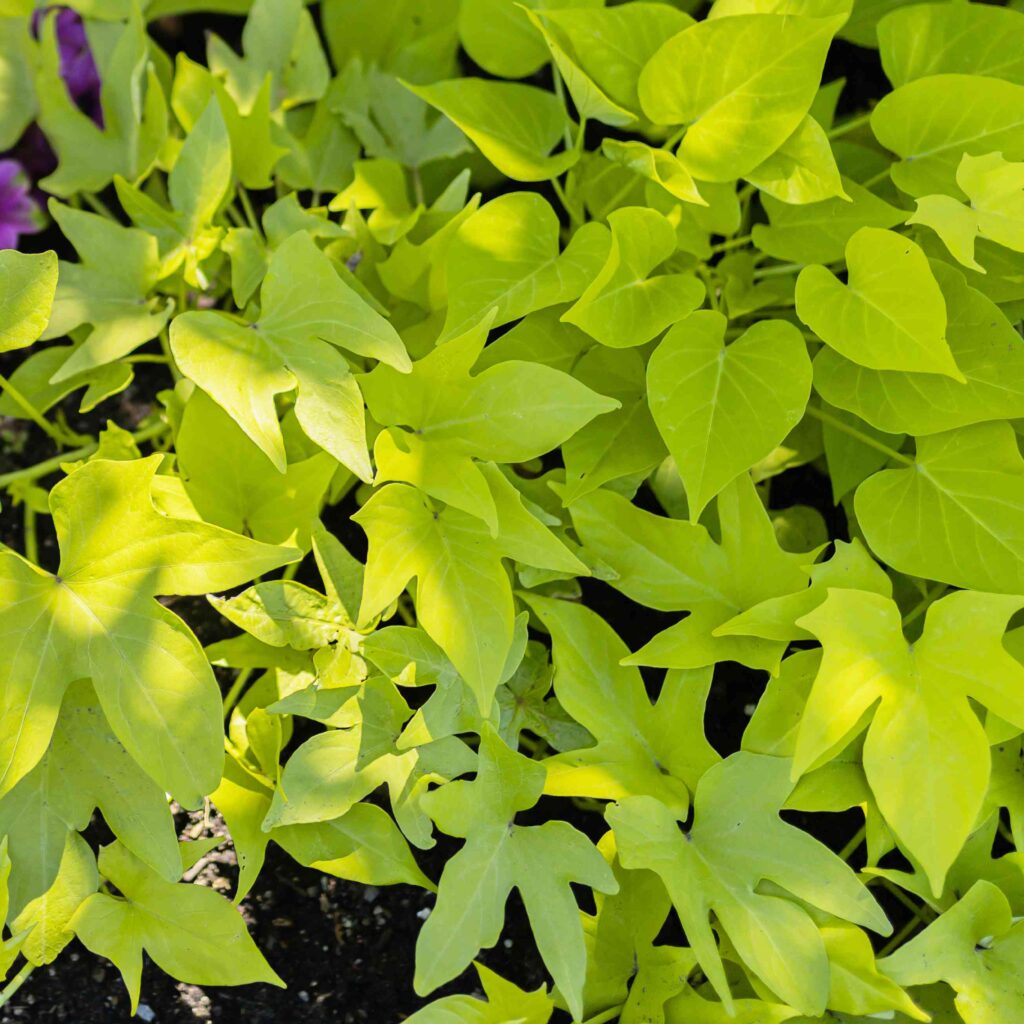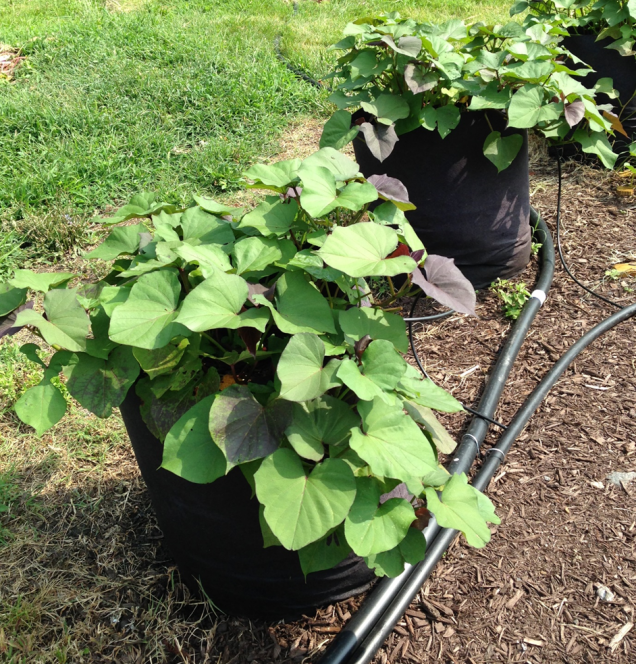Urban gardening is undergoing a revolution, and sweet potatoes—a nutritious, high-yield root vegetable—are becoming the star of container-based setups. But what if you could multiply your harvest even further by training the plant upward rather than letting it sprawl out? Vertical container gardening for sweet potatoes offers just that. By utilizing vertical supports, stacking pots, or building grow towers, you can grow more in less space while still harvesting nutrient-rich tubers. In this article, we’ll walk you through everything you need to know about growing sweet potatoes vertically in containers for maximum efficiency, yield, and health.
Why Grow Sweet Potatoes Vertically?

Sweet potato vines can grow 10 to 20 feet long, often sprawling across garden beds. In limited-space environments like balconies or patios, this growth becomes difficult to manage. Vertical growing offers multiple benefits:
- Saves space by going upward, not outward.
- Improves air circulation, reducing risk of disease.
- Easier pest control as the foliage is elevated.
- Increases sunlight exposure for all parts of the plant.
- Cleaner environment – less vine mess on the ground.
In short, vertical growing in containers is not just possible—it’s practical and productive.
Understanding Sweet Potato Growth

Before jumping into techniques, it’s helpful to understand how sweet potatoes grow. The plant develops:
- Vines: Above-ground, fast-growing, and sprawling.
- Tubers: Underground, forming along the plant’s root system.
Key point: While vertical supports are for managing vines, the root zone in the container must still allow enough room for tubers to develop. This means even with vertical training, container depth and width are critical for root formation.
Choosing the Right Container

The foundation of a successful vertical container garden for sweet potatoes is—unsurprisingly—the container. It needs to:
- Support ample root development.
- Provide excellent drainage.
- Be stable enough to hold a trellis or vertical frame.
Recommended container specs:
- Size: At least 15–20 gallons (60–75 liters).
- Depth: Minimum 12–18 inches (30–45 cm).
- Material: Fabric grow bags, food-grade plastic bins, or half-barrels.
- Drainage holes: Essential to prevent root rot.
You can also explore tiered vertical planters, stacked crates, or DIY towers, as long as the bottom container is deep and wide enough for tuber formation.
Best Sweet Potato Varieties for Vertical Growth

Not all sweet potatoes are suited to vertical growing. The goal is to choose compact or semi-bushy varieties that perform well in containers and produce vigorous vines that respond to training.
Top choices:
- Vardaman – A bush-type variety perfect for tight spaces.
- Porto Rico – Compact and container-friendly.
- Georgia Jet – Fast-growing with high yields.
- Beauregard – Versatile and adaptable.
While you can grow any variety vertically, bushy or semi-compact types make vine management much easier.
Preparing and Planting Sweet Potato Slips

Sweet potatoes are grown from slips, which are shoots sprouted from mature tubers.
Steps to prepare slips:
- Place a sweet potato in water or moist soil, half-submerged.
- Wait 3–4 weeks for slips (sprouts) to grow.
- Once they reach 6–8 inches long, remove and root them in water for a few days.
- Transplant them into your container when they develop small roots.
Planting tips:
- Insert slips about 4–5 inches deep into the soil.
- Space slips at least 12 inches apart in large containers.
- For vertical containers or towers, plant around the perimeter and center for even growth.
Building a Vertical Support System
To grow sweet potatoes vertically, you must support their vines properly. This does not affect the tuber formation underground but helps with space-saving, sun exposure, and disease prevention.
Support options:
- Trellises
- Install a bamboo, wire, or plastic trellis in the pot or behind it.
- Tie vines gently with soft garden twine as they grow.
- Cages or Arbors
- Tomato cages or vertical arches work well for sprawling vines.
- These allow for organized upward or circular vine growth.
- Stakes and String Systems
- Use tall wooden or PVC stakes with a string network.
- Effective for lightweight vine training.
- Hanging Wall Systems or Vertical Frames
- Train vines along vertical walls with hooks or netting.
Pro tip: Begin training early when the vines are flexible and manageable.
Ideal Soil Mix for Vertical Container Growing
Sweet potatoes thrive in light, loose, and well-draining soil. Since the roots are forming tubers, the soil must encourage downward and lateral spread without compaction.
Soil recipe:
- 50% organic potting mix
- 25% compost or aged manure
- 15% perlite or coarse sand for drainage
- 10% coconut coir or peat moss
Soil pH: Slightly acidic (5.8 to 6.2)
Drainage: Add gravel or broken terracotta pieces at the bottom if necessary.
Light, Water, and Temperature Requirements
Sweet potatoes are heat-loving and sun-hungry. To maximize your yield:
- Sunlight: 6–8 hours of full sun per day.
- Temperature: Ideal range is 75–95°F (24–35°C).
- Watering: Keep the soil consistently moist, not soggy.
- Early stage: Water more frequently.
- After 90 days: Slightly reduce watering to encourage tuber development.
Vertical vines dry out faster than ground-level ones, so monitor the leaf wilting as an indicator of dehydration.
Fertilizing for Optimal Growth
Avoid overfeeding, especially with nitrogen-rich fertilizers, as they promote vine growth over tuber development.
Fertilizer schedule:
- At planting: Mix in compost or a balanced slow-release fertilizer (e.g., 10-10-10).
- Midseason (6–8 weeks): Add potassium-rich liquid fertilizer or compost tea (e.g., 5-10-10).
- Avoid late feeding, which could disrupt tuber bulking.
Organic boosters: Bone meal, wood ash, and seaweed extract can enhance root development naturally.
Managing Vines and Pruning
While training sweet potato vines vertically, you’ll need to prune and manage their direction.
Vine management tips:
- Begin guiding vines up supports when they’re 12–18 inches long.
- Use soft ties to avoid damaging stems.
- Trim excessive side shoots or long runners after 60 days.
- Avoid cutting back aggressively, as leaves contribute to photosynthesis and root development.
Proper vine management improves airflow, reduces pests, and boosts root yield.
Pest and Disease Prevention in Vertical Containers
Vertical growing naturally reduces some pest issues, but watch for:
- Sweet potato weevils
- Aphids
- Whiteflies
- Fungal leaf spots
Control measures:
- Spray neem oil or garlic-pepper spray once every 10 days.
- Use yellow sticky traps for flying pests.
- Ensure air circulation by not overcrowding containers.
- Remove diseased leaves promptly.
Rotate crops in containers if reusing soil, and sanitize containers after harvest.
Harvesting Sweet Potatoes from Vertical Containers
Sweet potatoes typically take 90–120 days to mature.
Harvest signs:
- Yellowing and dieback of leaves and vines.
- Slower growth or visible tuber swelling near the soil surface.
Harvest tips:
- Use your hands or a trowel to gently dig around the plant base.
- Be careful not to nick or bruise the tubers.
- After harvesting, cure tubers for 7–10 days in a warm, dry location to improve sweetness.
Vertical growing doesn’t affect tuber maturity but might make harvesting easier, especially in modular container towers.
Final Tips for Vertical Sweet Potato Success
- Choose compact or bush-type varieties.
- Use deep and wide containers with good soil.
- Set up strong vertical support early.
- Train vines gently and prune wisely.
- Keep soil moist and fertilize with potassium-rich nutrients.
- Watch for pests and keep air circulation high.
Conclusion
Growing sweet potatoes vertically in containers is a game-changer for urban gardeners and anyone with limited space. Not only does it allow for better vine management, but it also improves airflow, sunlight access, and ease of maintenance. With the right setup and care, vertical gardening can lead to impressive yields and healthy, delicious sweet potatoes—right from your balcony, rooftop, or patio.






Leave A Comment